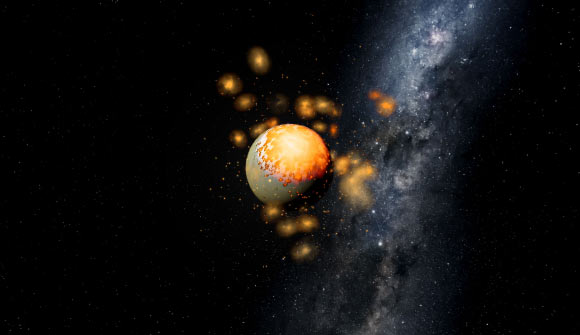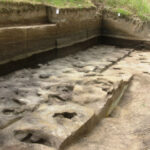New research shows that long-lived volcanism, driven by early, energetic collisions on Venus, offers an explanation of its young surface age with stagnant-lid tectonics. This volcanic activity is fuelled by a superheated core, resulting in vigorous internal melting regardless of initial conditions.
Marchi et al. compared the early impact history of Venus and Earth, determining that Venus experienced higher-energy impacts creating a superheated core. Image credit: Southwest Research Institute.
“One of the mysteries of the inner Solar System is that, despite their similar size and bulk density, Earth and Venus operate in strikingly distinct ways, particularly affecting the processes that move materials through a planet,” said Southwest Research Institute researcher Simone Marchi.
The Earth’s shifting plates continuously reshape its surface as chunks of the crust collide to form mountains ranges, and in places promote volcanism.
Venus has more volcanoes than any other planet in the Solar System but has only one continuous plate for its surface.
More than 80,000 volcanoes — 60 times more than Earth — have played a major role in renewing the planet’s surface through floods of lava, which may continue to this day.
Previous simulations struggled to create scenarios to support this level of volcanism.
“Our latest models show that long-lived volcanism driven by early, energetic collisions on Venus offer a compelling explanation for its young surface age,” said Yale University’s Professor Jun Korenaga.
“This massive volcanic activity is fueled by a superheated core, resulting in vigorous internal melting.”
Earth and Venus formed in the same neighborhood of the Solar System as solid materials collided with each other and gradually combined to form the two rocky planets.
The slight differences in the planets’ distances from the Sun changed their impact histories, particularly the number and outcome of these events.
These differences arise because Venus is closer to the Sun and moves faster around it, energizing impact conditions.
In addition, the tail of collisional growth is typically dominated by impactors originating from beyond Earth’s orbit that require higher orbital eccentricities to collide with Venus rather than Earth, resulting in more powerful impacts.
“Higher impact velocities melt more silicate, melting as much as 82% of Venus’ mantle,” said Dr. Raluca Rufu, a researcher at the Southwest Research Institute.
“This produces a mixed mantle of molten materials redistributed globally and a superheated core.”
If impacts on Venus had significantly higher velocity than on Earth, a few large impacts could have had drastically different outcomes, with important implications for the subsequent geophysical evolution.
The team combined expertise in large-scale collision modeling and geodynamic processes to assess the consequences of those collisions for the long-term evolution of Venus.
“Venus internal conditions are not well known, and before considering the role of energetic impacts, geodynamical models required special conditions to achieve the massive volcanism we see at Venus,” Professor Korenaga said.
“Once you input energetic impact scenarios into the model, it easily comes up with the extensive and extended volcanism without really tweaking the parameters.”
“Interest in Venus is high right now. These findings will have synergy with the upcoming missions, and the mission data could help confirm the findings,” Dr. Marchi said.
The study was published in the journal Nature Astronomy.
_____
S. Marchi et al. Long-lived volcanic resurfacing of Venus driven by early collisions. Nat Astron, published online July 20, 2023; doi: 10.1038/s41550-023-02037-2




